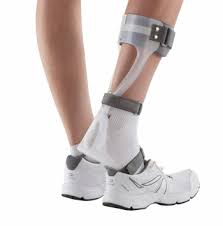Benefits and Drawbacks of a Dynamic Splint for Foot Drop

A dynamic splint for foot drop holds the foot in a normal position while walking or standing. It can help to keep the foot at a 90-degree angle, which can make walking easier. The splint can also be customized to fit the patient better. This article will look at the benefits and drawbacks of each. You can also learn about physiotherapy and foot orthosis. But, first, let’s discuss the benefits of foot drop splint with spring.
Some benefits of dynamic splint for foot drops
Dynamic splints are effective tools used in the treatment of foot drop. This condition hinders the ability of the toes and ankle to flex. This condition is caused by damage to the peroneal nerve or any muscle in the leg. A dynamic splint is a mechanical device that helps regain ankle and foot movements by providing constant support and stimulation to the affected muscles. Here are some benefits of dynamic splints for foot drops:
- Increased Mobility: Dynamic splints help increase mobility and flexibility of the ankle and foot muscles, thereby enhancing movement and overall quality of life.
- Reduced Pain: Foot drop can cause pain in the foot and ankle, which can be relieved using a dynamic splint. It provides support and protection to the affected areas, which can help to reduce pain.
- Improved Posture: Using a dynamic splint helps improve posture and gait, which can prevent falls and other injuries.
- Cost-Effective: Dynamic splints are a cost-effective alternative to more invasive treatment options, such as surgery or injections.
- Non-Invasive: Dynamic splints are non-invasive, making them a great option for people who prefer non-surgical treatments.
Using dynamic splints for foot drops can help improve mobility, reduce pain, and enhance the overall quality of life for people with this condition.
Ankle foot orthosis
In addition to providing foot support, the ankle-foot orthosis can help alleviate symptoms related to foot drop. Traditional ankle-foot orthoses are rigid and are designed to immobilize the ankle joint at the right angle. These devices are often used to prevent foot drops during the swing phase of gait. This type of orthosis can prevent the foot from dropping during the swing phase by keeping the toes and the heel in contact with the ground.
A traditional AFO for foot drop limits the ankle’s dorsiflexion and plantarflexion, disrupting the rhythm of walking and increasing energy expenditure. The hinge-applied Dynamic AFO allows the ankle to maintain its flexibility during the loading response, reducing the energy costs associated with hemiparetic gait. In addition to the traditional orthosis, the Dynamic AFO can help relieve symptoms of foot drop due to foot drops caused by calf muscle spasms.
Physiotherapy
The first step in a patient’s treatment for foot drop is to determine whether surgical intervention offers a realistic chance of returning nerve function. The etiology of the problem must be determined, and it is often impossible to restore nerve structure. However, if foot drop remains a persistent problem, supportive measures should be available. Such measures should be based on the patient’s original level of functioning and expectations for daily mobility.
The SaeboStep is a low-profile, at-home orthotic device that provides a visible improvement in gait. The splint is comfortable to wear and has an over-molded tongue and calf area that is hinged. The foot wrap is attached to a plastic inlay that fits between the tongue and laces. There is also a shoeless version for those who wish to wear the orthotic without footwear.
Ankle Splint
Foot drop is a condition that makes it difficult to lift the front part of the foot. It can affect one or both feet and can occur at any age. Because the ankle is not able to lift the front part of the foot, the toes drag while walking. This condition can be caused by a variety of factors, including weak muscles and poor range of motion. Dynamic ankle splints for foot drops are an excellent choice for preventing foot drops.
Designed for non-ambulatory use, Dynamic ankle splints can improve the quality of life for patients with foot drops. This orthosis features an adjustable aluminum stay and overmolded edges. Its low-profile design and hinged calf area make it comfortable to wear. The Active Ankle System’s stirrup and air cell liner can be easily adjusted and are made of lightweight, strong materials.
Foot Flexor
The FootFlexor is a dynamic ankle-foot orthosis (AFO) that is indicated for people who suffer from a foot drop or similar conditions. This brace is used to support the ankle joint and help increase compliance and lift the toe gait. The AFO is comfortable to wear, allowing patients to walk without discomfort. It is effective at alleviating symptoms of foot drop and ankle instability and has been proven to reduce the incidence of falls. In addition to improving walking ability, the FootFlexor is also a functional orthotic, meaning that patients can wear their usual shoes while wearing it.
The FootFlexor can be worn with any pair of normal lace shoes and can be attached to the shoe eyelet hooks. Its adjustable cuff fits most ankle sizes, and the bungee can be adjusted to provide the correct tension for a specific patient. The FootFlexor can improve lateral support, reduce the risk of falls, and improve the overall quality of life for sufferers of foot drops.
Read More: How a Drop Foot Brace is A Game-Changer for Athletes



